LINEAJES: Unifying Cultural Identities Through Music
Review of Antonio M. Gómez: LINEAJES at Frye Art Musuem
Written by TeenTix Newsroom Writer Juliana Agudelo Ariza and edited by Teen Editorial Staff Member Daphne Bunker

Amid the sublime paintings of Frye Salon, instruments wait in the middle of the room. They cast a poignant presence on viewers, the silence of the room awaiting the cacophony of their mellifluous sounds. Until March 10, 2024, visitors coming to the Frye Art Museum will get to experience LINEAJES, an exhibit focused on the dynamic histories and rhythms of these instruments around the world, taken directly from the collection of Antonio M. Gómez. The exhibit juxtaposes the past and the present, and how the upholding of timeless methods continues to evolve and influence how those instruments are played today. LINEAJES brings to light the artistry behind the design of the instruments, their undeniable impact on the unification of cultural traditions, and the distinctive sounds that have become part of our own identities.
Frye Salon is an ideal setting for the art found within. This venue consists of white walls that are adorned with beautiful paintings, mostly by European artists. These artworks cast a golden shine with their elaborately-crafted frames.
Moving towards the heart of the salon is the title exhibit, LINEAJES. From this exhibition, Antonio M. Gómez presents a gratifying view of an amalgamation of cultures. It is an individual expression that adds to the incessant flow of world history through music. Each of the twelve segments that comprise the wood-built exhibition tells a story of the people who constructed and played the instruments.
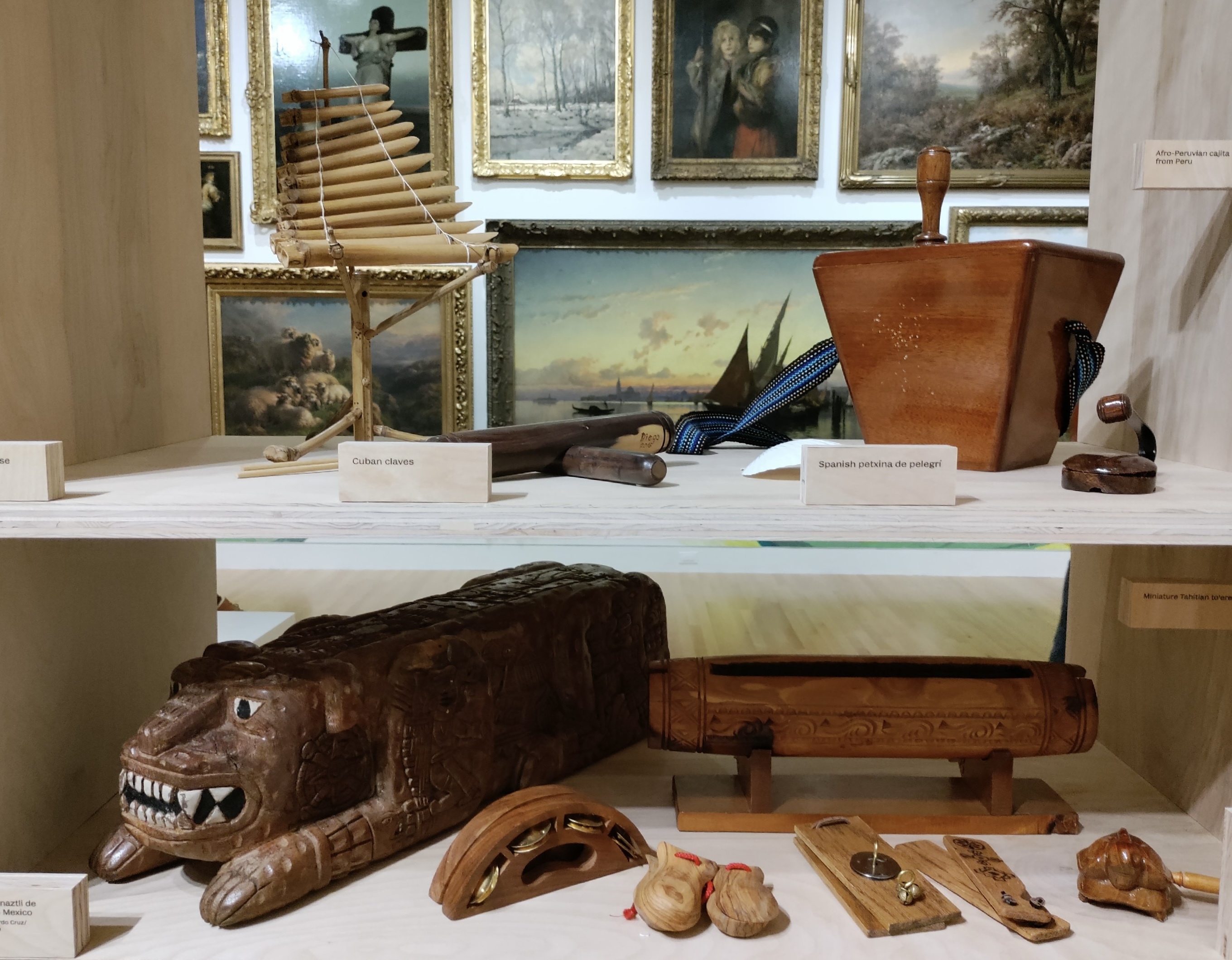
Visitors can find guides at each end of the display explaining the origins and cultural significance of each piece, along with a message from Gómez. These guides are accompanied by audio devices that contain some arrangements using the instruments seen, allowing visitors to hear a diaspora of sounds originating from Africa, Latin America, Asia, and beyond. The vines that decorate the walls of the salon were painted as a request from Gómez by artist Angelina Villalobos Soto to represent the connections and links between Western and worldwide artistic expression.
Antonio M. Gómez, who provided and collected the instruments, takes pride in his heritage and background as an educator, musician, and producer. His Chicano and Italian cultures made him realize his potential in demonstrating the ways that different cultures intertwined in music specifically. His experiences led him to opportunities that allowed him to see the world through many lenses.
“Music tells stories, and I’m not talking about lyrics. Instrumentation, arrangements, and styles all reveal where we’ve been, and who’ve we met along the way,” he explains in his artist statement.
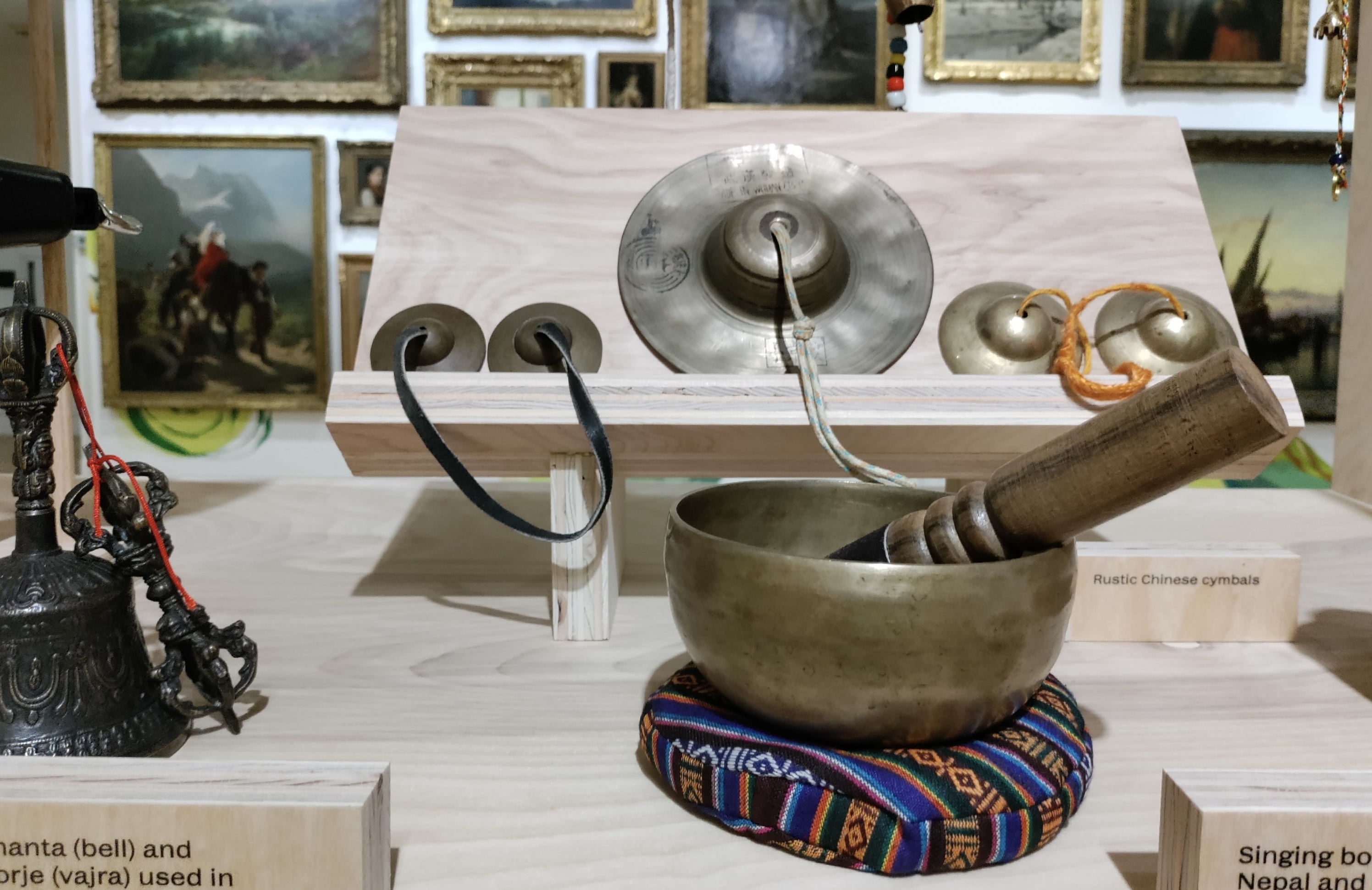
His commitment to spreading the knowledge and passion of storytelling through music has brought us an exhibit where we see distinct elements and styles come to life. We see drums such as the djembe and the dunun that originated in Africa and deep, resonant voices told the story silenced through slavery, leaving behind a “musical and rhythmic legacy.” Other instruments are played in distinct ways, such as the guiro, which is scraped to make a distinct sound and keep the tempo found in genres such as cumbia, and Aztec leg rattles that shake when users step beats. There was even a quijada de burro (donkey’s jaw) that represented resilience in groups living in the Americas and their indomitable spirit. Their resourcefulness allowed the music to evolve and cement itself in their history.
Similarly, the huehuetl drum aesthetically, is a beautifully carved work of art that manifests the survival of the culture despite colonization. It holds a remnant of the forgotten past. In the exhibit, the intricate visual designs of gorgeous goblet drums tell the story of resilience while achieving its booming sound.
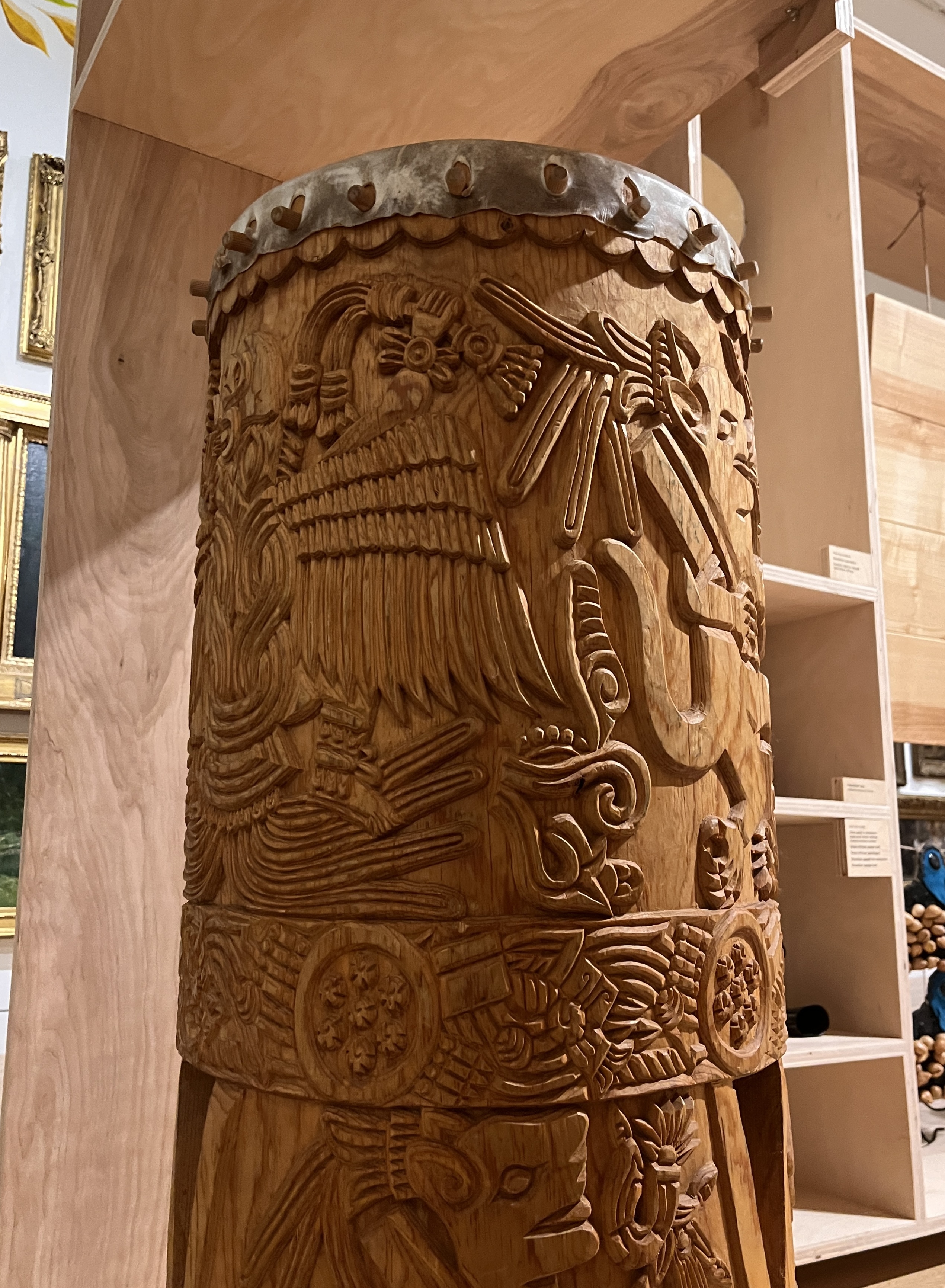
Other percussion examined was informative not only because of the stories it told but also because of what it was made of. LINEAJES categorized instruments that were made with plants, such as log drums from the Aztecs (called teponaztli) and la cajita, originating from Afro-Peruvian traditions. Additionally, there were metal gongs and cymbals (primarily from Asia), famous for their resonance and reverberation, chosen for the accents and fun details they add to complex melodies.
There was also beautiful craftsmanship that went into the creation of other instruments, such as Baroque guitars (from Spain) that were carved and painted in intricate patterns that decorated around edges and on the back, and even a gently cut rosette, which gives it its distinct appearance. Or Ban Mo’s from Vietnam, one of the most interesting and unique percussion instruments.
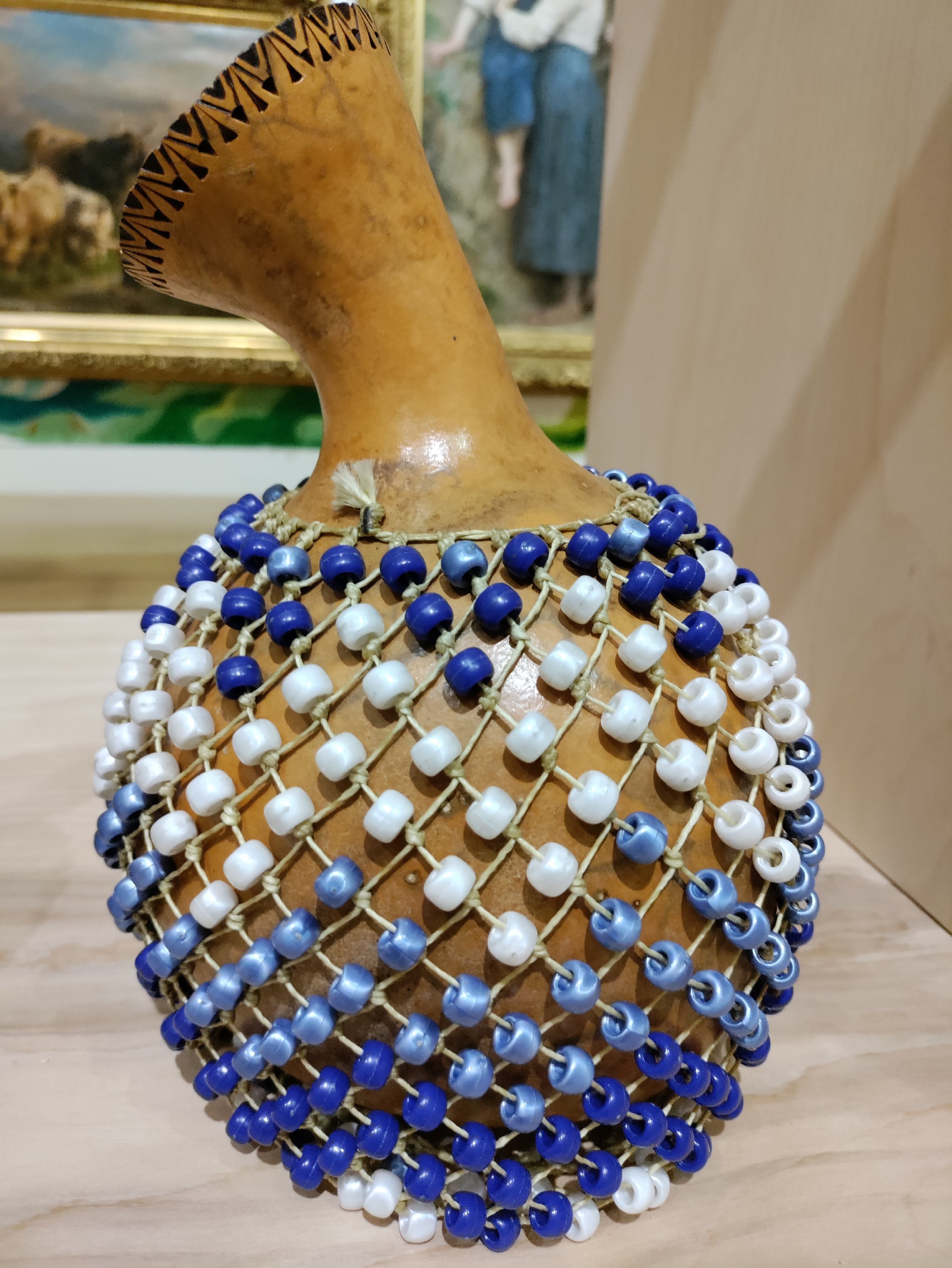
Each one of the instruments had a story to tell. It is perhaps the depth of their sounds and origins--which Gómez arranged beautifully to incorporate narratives integrated within the reality of music today--that made the visit to the exhibit most memorable. But it was also the parallels that were left for the viewer to figure out, such as the comparison between the foreground and the background. As the Frye’s description said, it was Gómez’s goal to bring to light the “intercultural artistic heritage long obscured by the Western canon.”
LINEAJES achieves Gómez’s vision perfectly because of the subtleness with which he communicates his artistic beliefs, and how he incorporates meaningful principles in the auditory and visual aspects that viewers can enjoy. The values woven into each aspect of his collection make each moment spent in the exhibit one of reflection. The many stories built are vital pieces of our cultural identities, and the whole salon feels captivated by the spell of the rhythms. At the same time, the drumbeats capture the essence of integrated musicianship. The kindled spirits of each of the instruments came a long way and carried with them the life and sound that connects us all, as a single, unified lineage.
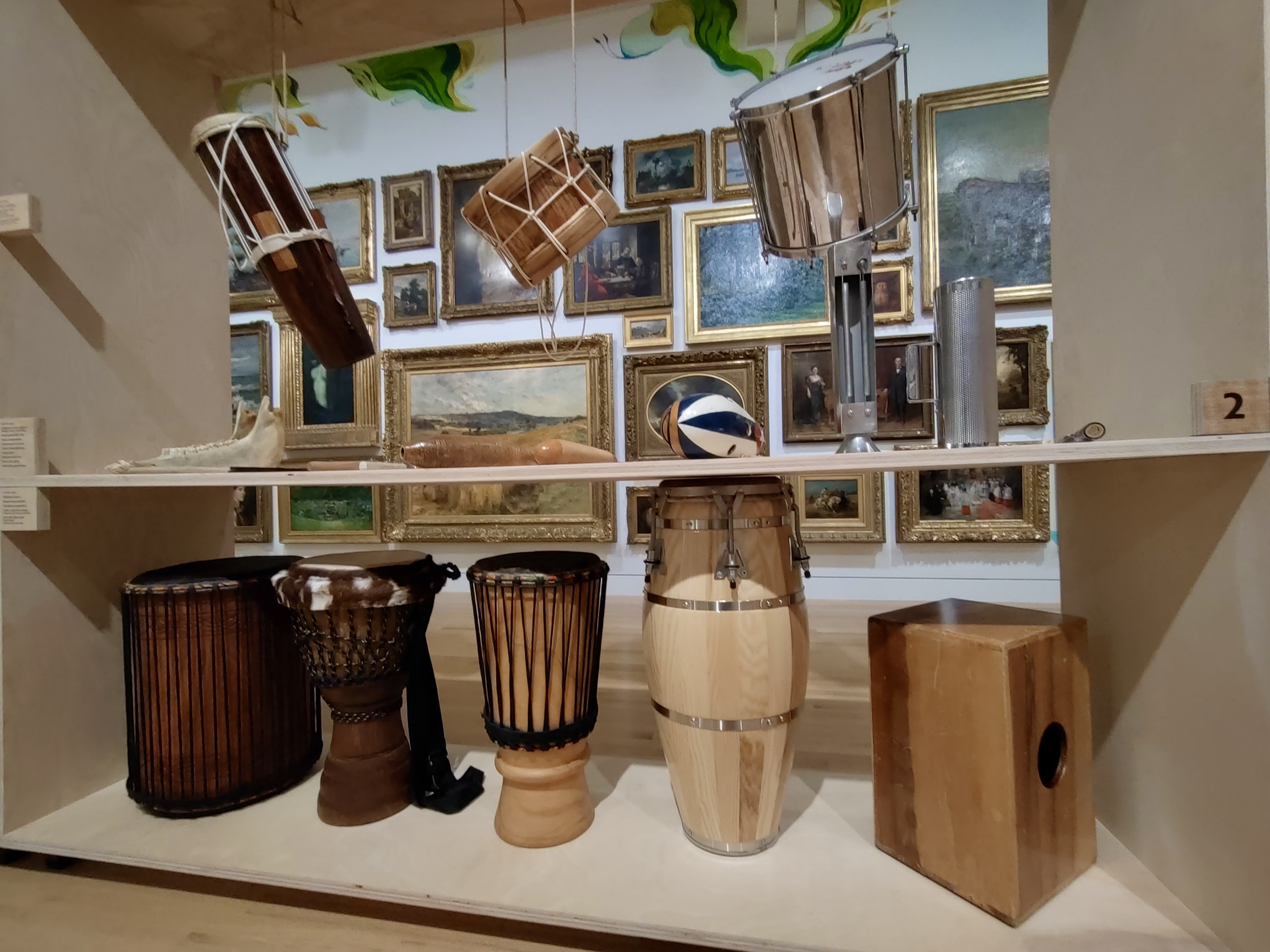
Lead Photo Credit: courtesy of Juliana Agudelo Ariza
The TeenTix Newsroom is a group of teen writers led by the Teen Editorial Staff. For each review, Newsroom writers work individually with a teen editor to polish their writing for publication. The Teen Editorial Staff is made up of 5 teens who curate the review portion of the TeenTix blog. More information about the Teen Editorial Staff can be found HERE.
The TeenTix Press Corps promotes critical thinking, communication, and information literacy through criticism and journalism practice for teens. For more information about the Press Corps program see HERE.

